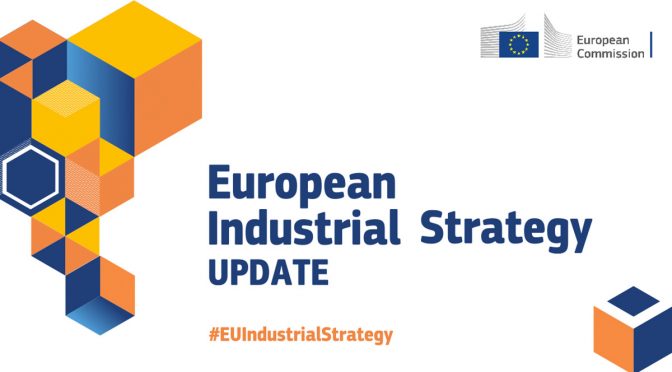Today the European Commission published its revised Industrial Strategy. The revised Strategy is an update of its Industrial Strategy of March 2020. It contains several new measures aimed at accelerating the roll-out of wind energy and other renewables. And crucially it acknowledges the strategic importance of renewable energies as a key industry that will make Europe more sustainable, resilient, and globally competitive.
Europe’s revised Industrial Strategy will add a new dynamic to the further development and expansion of wind energy and renewables. Last year’s Strategy already recognised “the need for a more strategic approach to renewables”. The new Strategy now includes concrete proposals to turn this vision into reality. And it explicitly recognises the ‘need to accelerate the roll-out of renewable energy sources’ if the EU is to meet its climate and energy targets.
The European wind industry today contributes €37bn pa to EU GDP. Each new wind turbine generates on average €10m of economic activity. Europe has 248 factories making turbines and the components for them. The EU-based turbine manufacturers are global technology leaders with a 54% share of the global market for new turbines.
To deliver climate neutrality the EU wants 1,000GW of onshore and 300GW of offshore wind capacity by 2050. The EU’s revised Industrial Strategy aims to achieve this through an accelerated build-out of new wind farms, improvements to permitting procedures and a range of demand-side incentives.
The new Strategy acknowledges that permitting is the main bottleneck for the expansion of wind energy and the supporting infrastructure. It calls for streamlined permitting procedures. Central to addressing this will be a new Energy and Industry Geography Lab. The Lab will be developed by the Commission’s Joint Research Centre in collaboration with industrial stakeholders. It will facilitate the development of renewable infrastructure by providing geospatial information on the availability of renewable energy sources, energy infrastructures and industrial demand centres.
Alongside this, national authorities will also need guidance on how they should simplify their permitting rules and procedures. We look to the Commission to disseminate the best practices here and help the relevant authorities to learn from each other.
The new Strategy also commits the Commission to remove unjustified barriers to corporate Power Purchase Agreements (PPAs), including in the upcoming revision of the Renewable Energy Directive (RED). Good: corporates want to play a more active role in the energy transition, and PPAs are key to this. The biggest barrier to PPAs today are the outdated rules in some countries on Guarantees of Origin (GOs). The RED should ensure that governments award GOs to all renewables producers including those receiving public financial support.
The Strategy also looks at dependencies in Europe’s supply chains including in renewables. The wind industry is already involved in the EU’s Raw Materials Alliance which aims to build a European supply chain for the permanent magnets in wind turbines that contain rare earths.
A big focus of the Strategy is how to decarbonise heavy industry. It’s good that the EU are going to pilot carbon contracts for difference (CCfD) to support relevant investments in green steel and renewable hydrogen production. The wind industry uses a lot of steel and wants it to be green. And we want to accelerate the transition from fossil-based to renewable hydrogen.
The wind industry also welcomes the clear signal in the Strategy in favour of greater flexibility in the EU’s energy & environment state aid guidelines. This will give Governments more scope to help industry decarbonise. And the Strategy says industry must have access to renewable electricity at affordable prices. Good: then make sure the state aid guidelines allow Contracts for Difference (CfDs) and technology-specific auctions – because they’re what keep renewable energy cheap.
Finally, it’s good the Strategy recognises the need to invest in skills to deliver the energy transition, and that the Commission are now establishing a Skills Roundtable for renewables. The wind industry employs 300,000 people today in Europe, which will rise to 450,000 by 2030 if governments deliver on their energy transition plans. But this needs a proactive approach to workforce development, to ensure the right number of e.g. electro-mechanical engineers and experts in digital and advanced manufacturing.
Just one disappointing aspect of the new Industrial Strategy. It doesn’t address the negative impact of the EU’s trade defence measures on the manufacturing costs of the European wind industry.
WindEurope works closely with the Commission on all of this as a member of the EU Industrial Forum.


